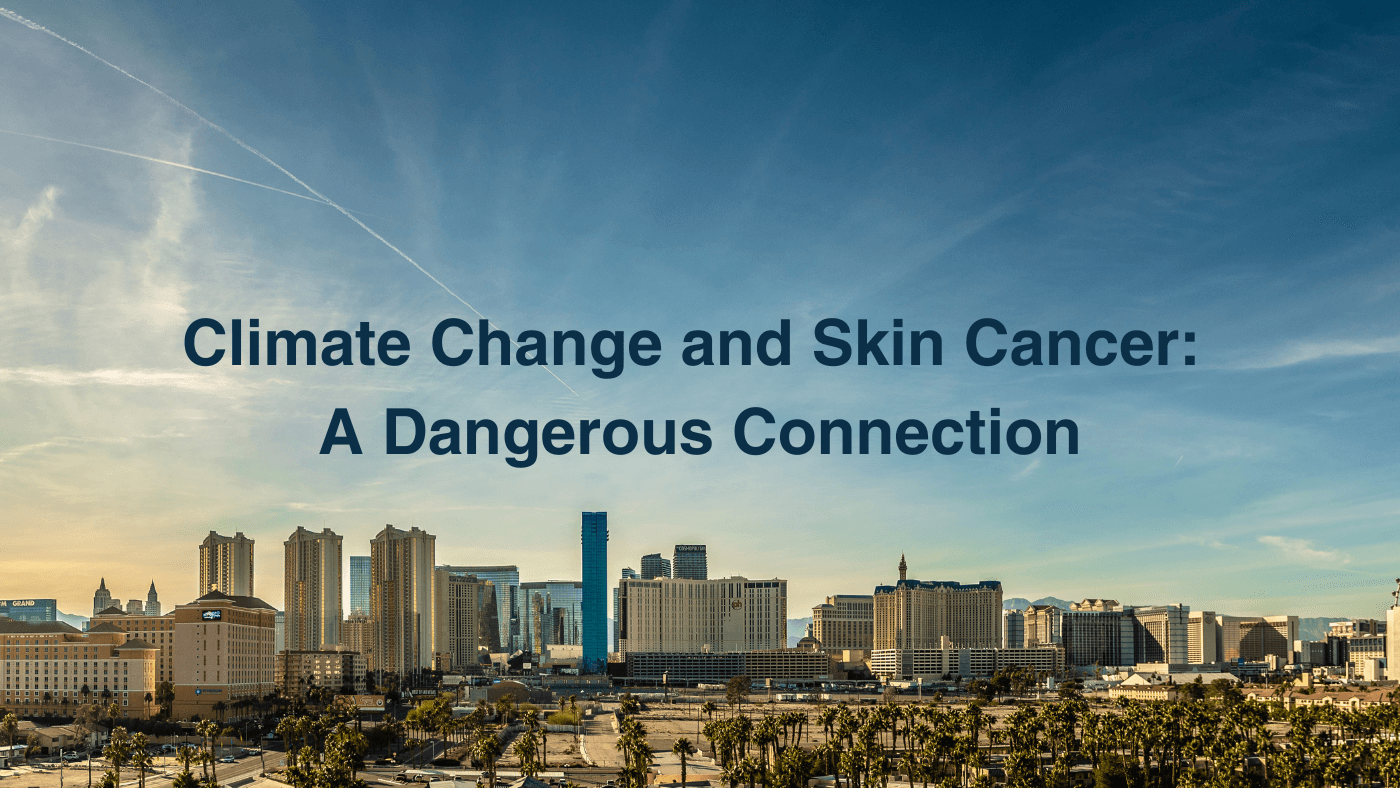Climate Change and Skin Cancer: A Dangerous Connection
Climate change has been a pressing issue for decades, with a wide range of environmental consequences. As global temperatures continue to rise, we face numerous challenges, including rising sea levels, extreme weather events, and biodiversity loss. However, another less-discussed implication of climate change is the potential increase in skin cancer cases due to increased exposure to ultraviolet (UV) rays[1]. We will explore the relationship between the potential increase in global temperature and the possible increase in skin cancer related to increasing UV ray exposure.
The Connection Between Global Temperature and UV Radiation
UV radiation, a component of sunlight, is responsible for various biological effects, including the production of vitamin D in our bodies and the damage to our DNA[2]. There are three types of UV radiation: UVA, UVB, and UVC. UVC is the most dangerous but absorbed by the Earth's atmosphere and does not reach the surface. However, UVA and UVB penetrate the atmosphere and are linked to skin cancer[3].
As global temperatures rise, the Earth's atmosphere undergoes changes that can impact UV radiation levels. One such change is the depletion of the ozone layer, which acts as a protective shield, absorbing a significant portion of the UV radiation from the sun[4]. Climate change has been linked to the depletion of the ozone layer, allowing more UV radiation to reach the Earth's surface and increasing the risk of skin cancer[5].

Skin Cancer and UV Exposure
Skin cancer is the most common form globally, with millions of cases diagnosed yearly [6]. The primary cause of skin cancer is exposure to UV radiation, which damages the DNA in skin cells, leading to the development of cancerous growths[7]. The most common types of skin cancer are basal cell carcinoma, squamous cell carcinoma, and melanoma[8].
Research has shown that even a slight increase in UV exposure can significantly increase skin cancer rates. According to the World Health Organization, a 10% decrease in ozone levels could result in a 26% increase in melanoma cases and a 6-8% increase in other types of skin cancer[9].
$12.00
A professional pomade with the benefit of UV protection. Classic styling, medium hold, and a lightweight feel. Smooth, flexible, moisturizing, and rinses out clean. Made in the USA, Paraben-Free and Free Shipping.… read moreSol Style Pomade with UV Protection SPF 33

The Role of Climate Change in Increasing Skin Cancer Risk
Climate change affects skin cancer risk in several ways:
Ozone depletion: As mentioned earlier, the depletion of the ozone layer allows more UV radiation to reach the Earth's surface, increasing the risk of skin cancer[10].
Changing weather patterns: Climate change can lead to longer and more intense heat waves, encouraging people to spend more time outdoors and increasing their exposure to UV radiation[11].
Melting ice and snow
Melting ice and snow due to global warming can also increase UV exposure. Ice and snow reflect up to 90% of UV radiation, reducing the overall exposure for people in those areas. As ice and snow diminish, less UV radiation is reflected, and more reaches the Earth's surface[12].

Conclusion
The relationship between global temperature increases and the potential rise in skin cancer cases due to increased UV exposure is a critical and often overlooked aspect of climate change[13]. Governments, scientists, and individuals need to take action to reduce greenhouse gas emissions and protect the ozone layer. Additionally, raising awareness about the risks of UV exposure and promoting sun protection measures, such as using sunscreen, wearing protective clothing, and seeking shade, are crucial steps in mitigating the impacts of climate change on skin cancer rates[14].
Sol Style Pomade with UV Protection SPF 33

$12.00
A professional pomade with the benefit of UV protection. Classic styling, medium hold, and a lightweight feel. Smooth, flexible, moisturizing, and rinses out clean. Made in the USA, Paraben-Free and Free Shipping.… read more
References:
[1] https://www.ncbi.nlm.nih.gov/pmc/articles/PMC7838246/
[2] https://www.ucsf.edu/news/2020/11/418976/climate-change-will-give-rise-more-cancers
[3] https://wiki.cancer.org.au/skincancerstats/Climate_change
[4] https://www.dermatologytimes.com/view/climate-change-may-increase-skin-cancer-risk
[5] https://www.labroots.com/trending/cancer/14691/climate-change-increase-skin-cancer-risk
[9] https://www.who.int/uv/faq/skincancer/en/index1.html
[10] https://www.ncbi.nlm.nih.gov/pmc/articles/PMC7838246/
[11] https://www.ucsf.edu/news/2020/11/418976/climate-change-will-give-rise-more-cancers
[12] https://wiki.cancer.org.au/skincancerstats/Climate_change
Sol Style Pomade with UV Protection SPF 33

$12.00
A professional pomade with the benefit of UV protection. Classic styling, medium hold, and a lightweight feel. Smooth, flexible, moisturizing, and rinses out clean. Made in the USA, Paraben-Free and Free Shipping.… read more




